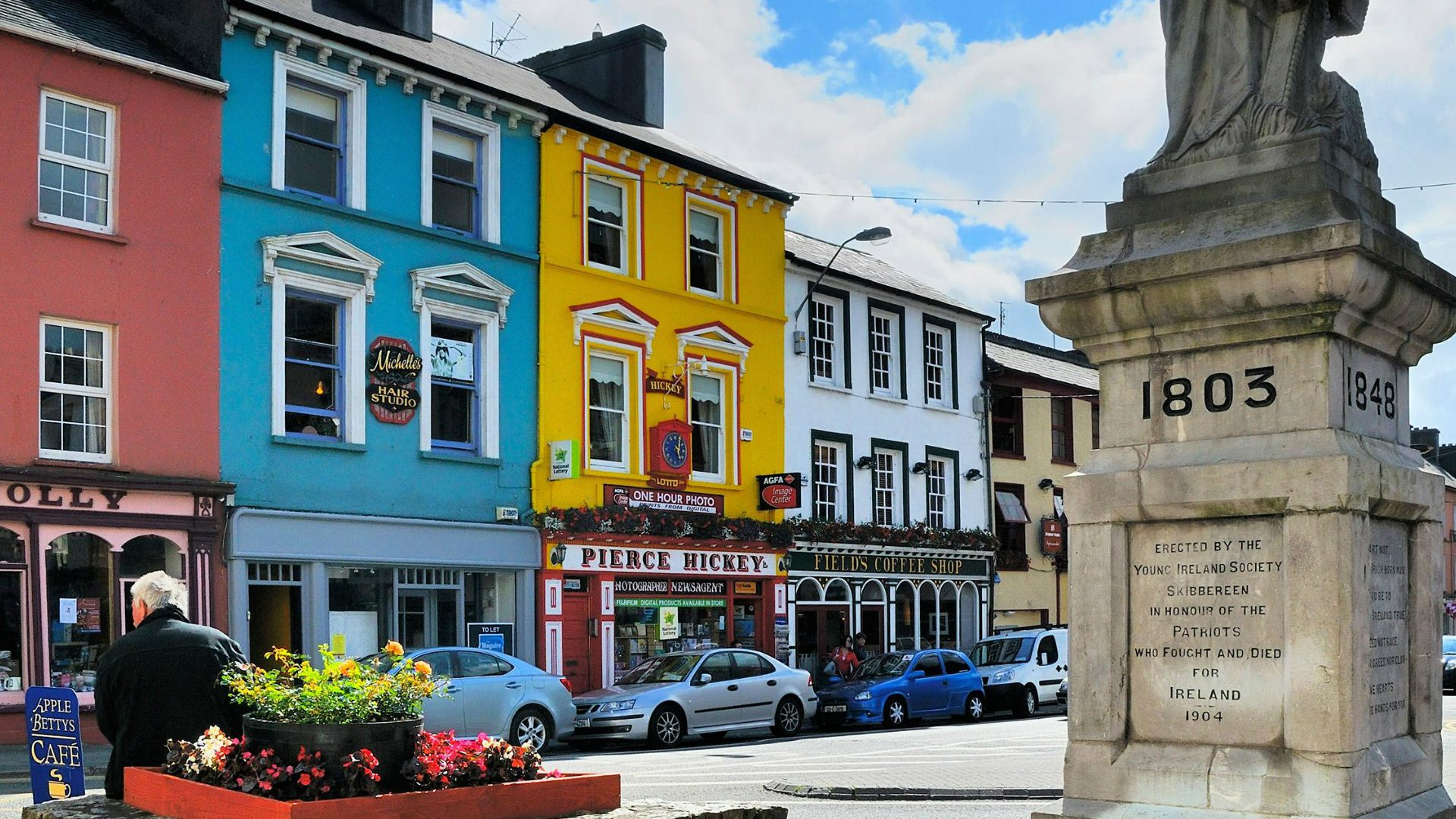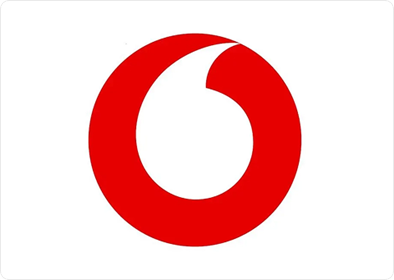This is the first part in a series where we’ll be looking at how fast fibre connectivity is changing everything for rural communities – Tales of a Gigabit town, coming soon.
Welcome to Skibbereen, a thriving town in beautiful West Cork, Ireland.
On a sunny Thursday lunchtime, the roads are jammed, and the brightly coloured cafés, pubs and restaurants are busy. The day before, as the heavens opened and the sky threatened – the same picture.
Although this is an area that attracts tourists thanks to stunning scenery and proximity to the Wild Atlantic Way – it’s not a holiday, the schools are in, and there’s nothing special going on.
Many towns would feel empty at this time of day. But something special is happening in Skibbereen – and the buzz is infectious.
Country life
According to EU data, 28% of the EU-28 population lived in a rural area in 2015. Ageing communities and depopulation as the young leave for the cities and better employment prospects means that only Lithuania has a population where the majority lives in the country.
Surprisingly, the biggest winners have been suburbs and towns. Driven by a desire for a better quality of life, our cities are starting to shrink.
But equally a return to the country seems out of reach for many, thanks to a perceived lack of infrastructure, good jobs, and opportunity.
So why is Skibbereen different?
Two words: Connectivity – and community.

The Baltimore Beacon is a local landmark, looking out over the Atlantic to the Americas. Picture credit: Fiona Graham / Vodafone Group
It takes a village
The town hd decided it wasn’t going down without a fight. So in 2014 a forum was held during the annual Taste of West Cork food festival to look at how jobs could be created in the area.
Local business owners gathered with some notable names in Ireland with either a connection to West Cork or a love of the area.
John Field is the owner of Field’s Supermarket, a local institution, among other things.
“[At the meeting was] Sean O’Driscoll, who is a member of the board. Sean is the CEO of Glen Dimplex, a very big company, employing about 10,000 people, but he comes from this area,” he says.
“And he had said to me, what about a digital hub? And I said why not? And it started there.”
The Ludgate Hub was born – a coworking space and tech hub. John is now the chairman of the board.
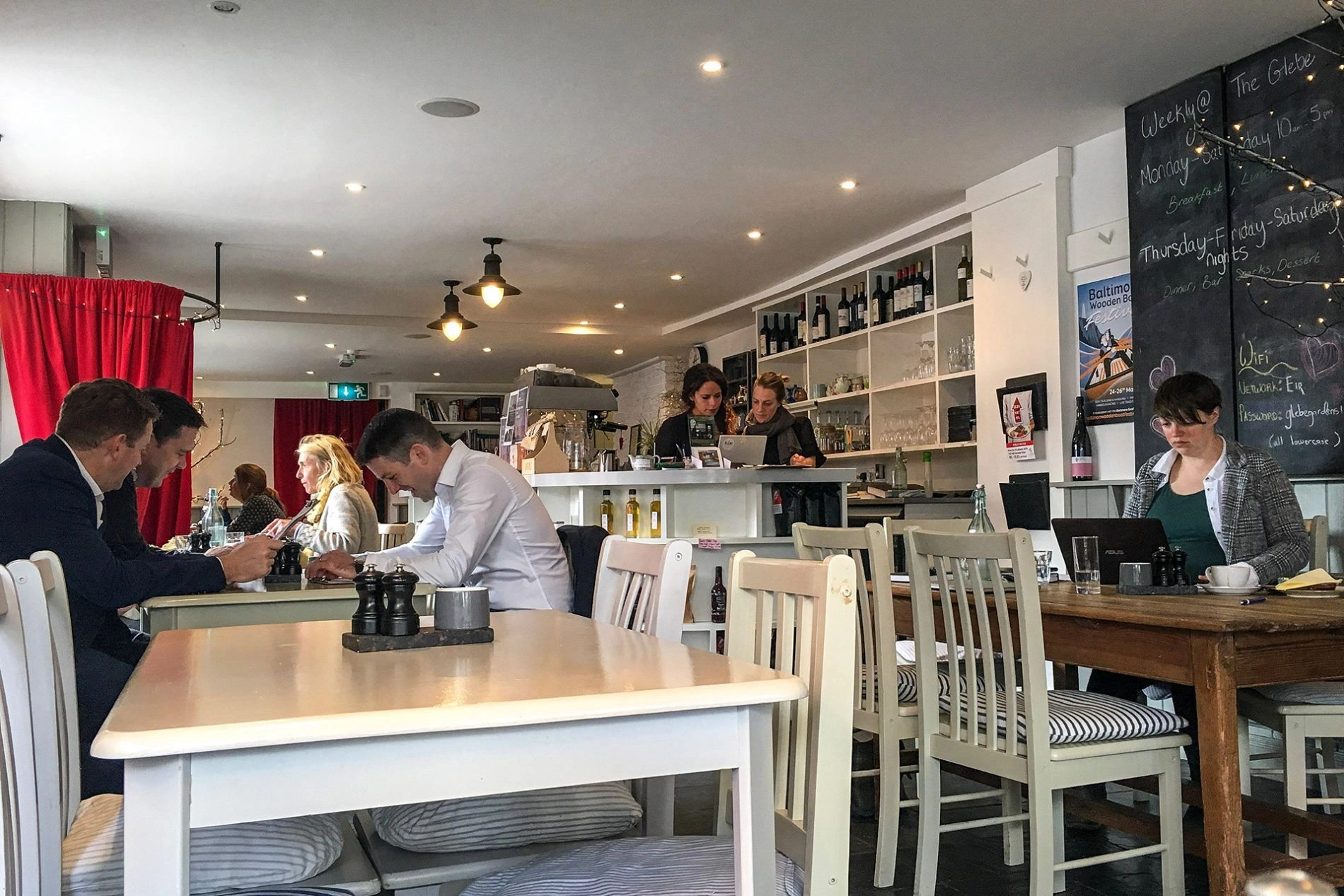
Food outlets in the town now look forward to the lunchtime rush. Picture credit: Fiona Graham / Vodafone
“There were very few quality job opportunities for young people,” says Ludgate Hub chief executive Adrienne Harrington.
“So once they had gone to second level school here and went to university in Cork or Dublin, they then didn’t see any reason to come back.”
“There weren’t high quality jobs that were here and that was the key reason that the hub was established.”
Powered by light
It quickly became clear there were a few hurdles on the way – not least a lack of decent connectivity.
As luck would have it, at the same time not a million miles away Vodafone Ireland and ESB, the Irish electricity company, were busy putting together a partnership. The plan was to roll out gigabit connectivity to communities across Ireland.
SIRO launched in 2015. The joint venture drew up a shortlist of 50 towns across the country where they would offer fibre connectivity free for two years.
This would be door to door, using existing electricity infrastructure, installed either in conduits underground or with cabling overhead.
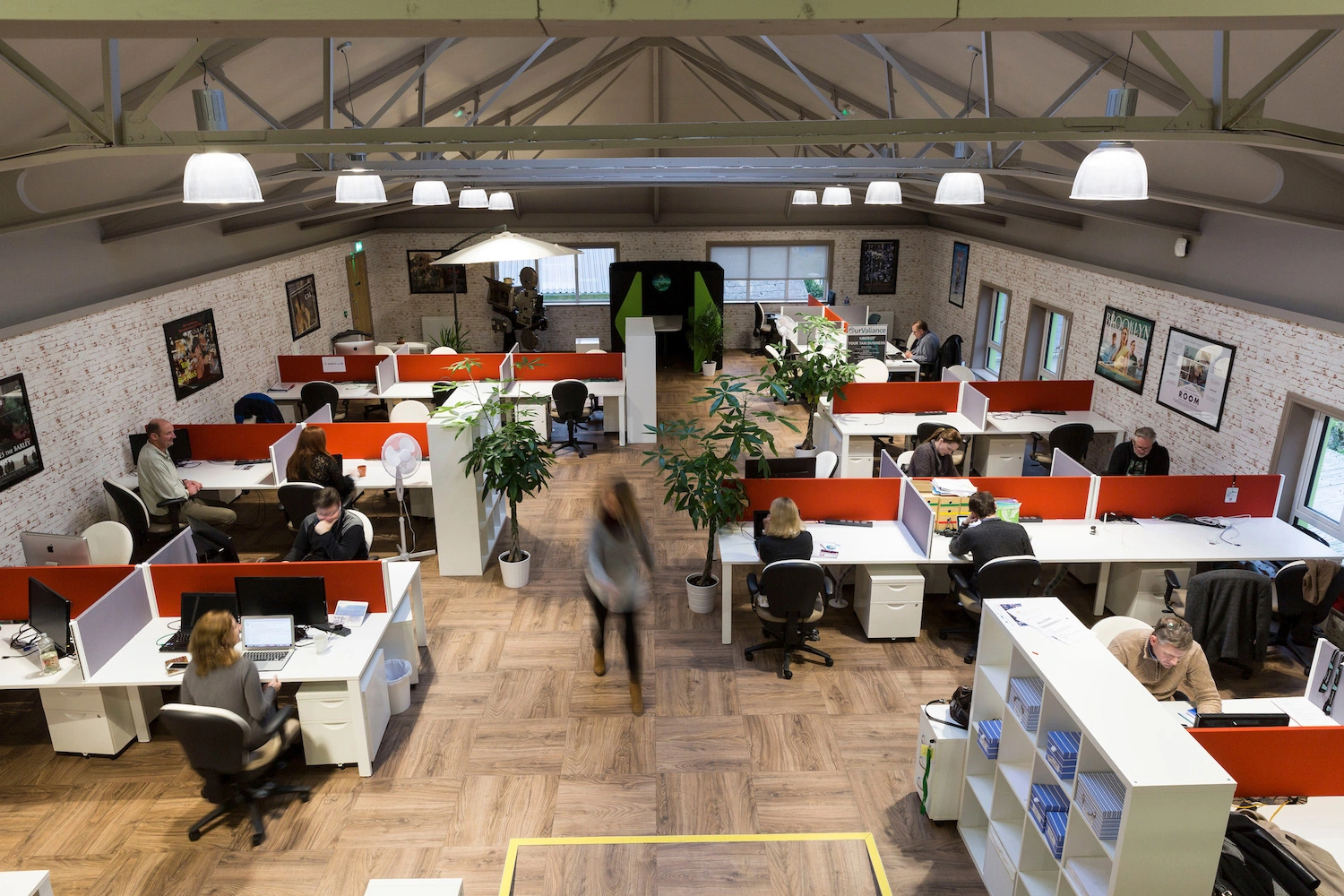
Central hub: The Ludgate is now being used as a model for Gigabit hubs across Ireland. Picture credit: Ludgate Hub
However Skibbereen wasn’t on the list.
Undeterred, the board of the hub took matters into their own hands and arranged a meeting with Anne O’Leary, CEO of Vodafone Ireland.
“Skibbereen became the first town, and it really was because of the [Ludgate] board and the community and the people that really got behind this,” she says.
“So it was local entrepreneurs, local businesses and the community that wanted to attract the young people back to Skibbereen, back to rural Ireland and incentivize people to maybe start businesses locally, to build the local economy.”
So nearly everything was in place. But there was one key ingredient missing – and John Field had the answer.
“So when we realised what we needed, I said, Anne is giving connectivity, Sean is giving me the video conferencing facilities, I better organize the building.
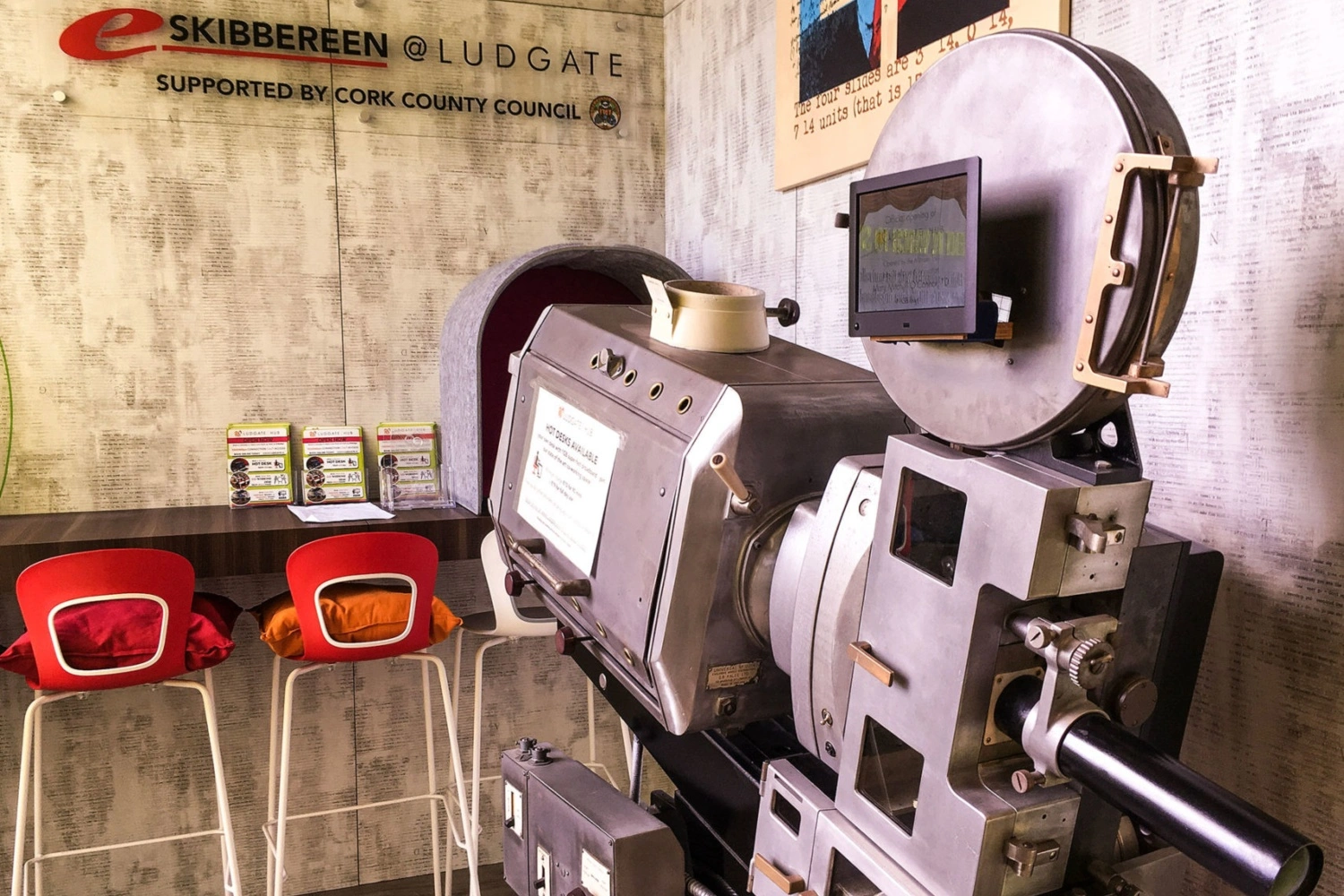
Roll cameras: The Hub used to be a cinema, and the original projectors have been preserved. Picture credit: Fiona Graham / Vodafone
“So, it was a great pleasure for me as chairman of the Ludgate, to be able to provide the building for the Ludgate Hub. Certainly one of the best decisions I made in my life.”
The building was originally the town cinema. It closed in the 1970s, when John was looking to expand. He bought it in 1988 – and it was a bakery until 2010.
The Hub was named after local man Percy Ludgate (more about him in coming weeks) who had begun work on an analytical engine (or computer) similar to the one described by Charles Babbage, without any knowledge of the latter’s work.
The future is exciting
High speed connectivity and space for local innovation, collaboration and digital education means the town can now compete, attracting talent and letting local people realise their ambitions while staying at home.
“The original target was 200 jobs,” says John Field.
“I was a bit skeptical, but in fact, in four years, there’s certainly more than 200 jobs created in Skibbereen. 400 is the next target.
“And will we reach that? Yes, we will, absolutely, no doubt whatsoever … everybody needs connectivity, and we’ll give them the connectivity.”
Adrienne Harrington is equally confident.
“There are a huge mix of jobs that have been created, some of them are what you would expect,” she says.
“We have a software company in Skibbereen that has expanded from 25 posts before the 1GB came to town [there’s now] 75 people employed and plans to expand further.”
“At the same time, we have small family-run businesses, for example, a furniture manufacturer who has been able to capitalise on the 1GB and expanded significantly as well.”
“There’s a huge range of businesses here both in the hub and within Skibbereen itself that have really managed to expand on the back of the connectivity.”
For Vodafone and SIRO, the pilot has been so successful they’ve already rolled out the Gigabit Hub project to towns across Ireland.
“Skibbereen, Ireland’s first Gigatown … should be an inspiration for all of Ireland,” says Serpil Timuray, CEO of Europe Cluster, Vodafone.
“There are amazing stories here of, for example, six women building their own aviation company or an online advertising business where the entrepreneur has moved from LA to Skibbereen.
“It is a true example of when broadband connectivity is provided for all and it all includes all, the whole economy of a town transforms and the social life changes.
“It’s a true example of our core purpose, where we want to include everyone, every entrepreneur, every human being in the exciting digital transformation ahead of us.
We’ll be bringing you more Tales of a Gigabit town over the weeks to come – meeting the people whose lives have been changed by the Hub and gigabit connectivity.






















